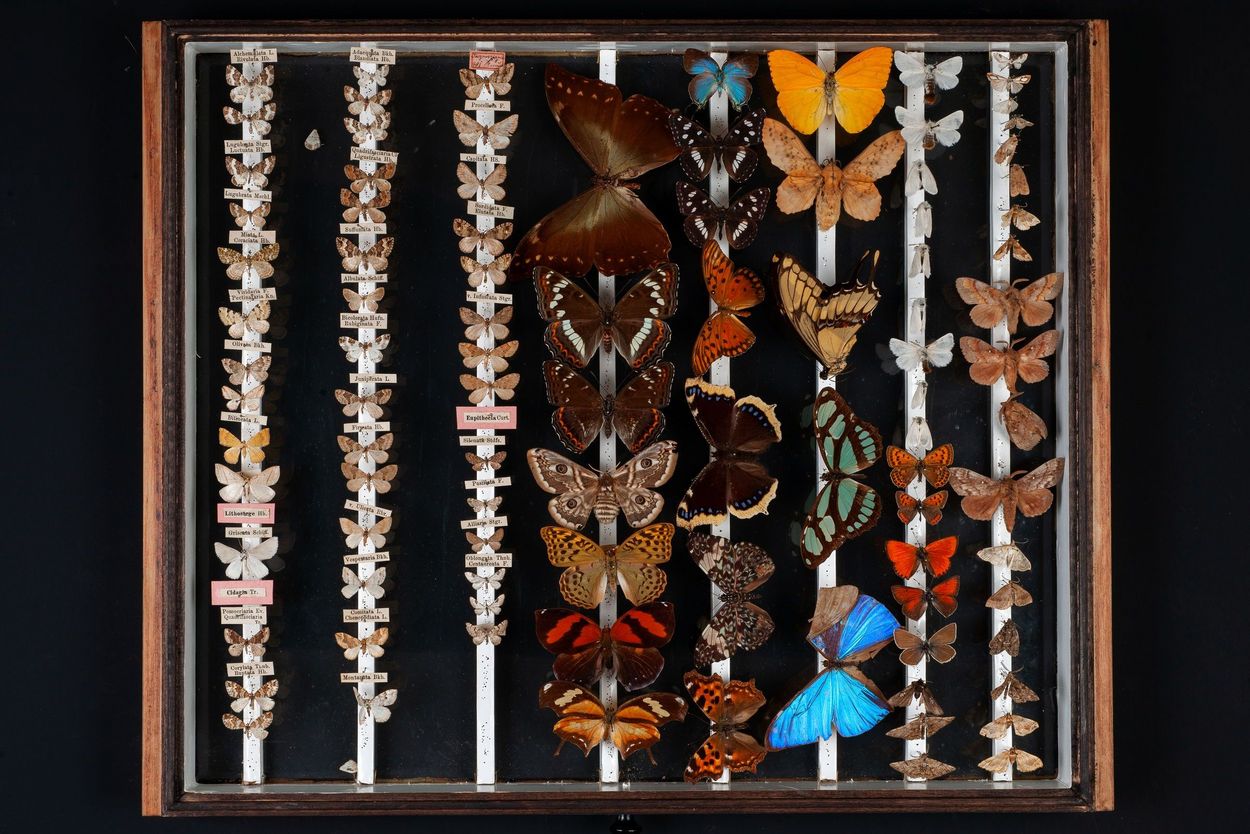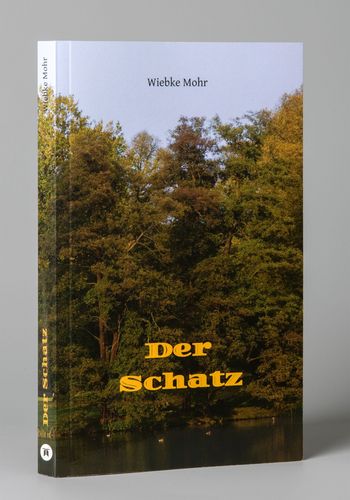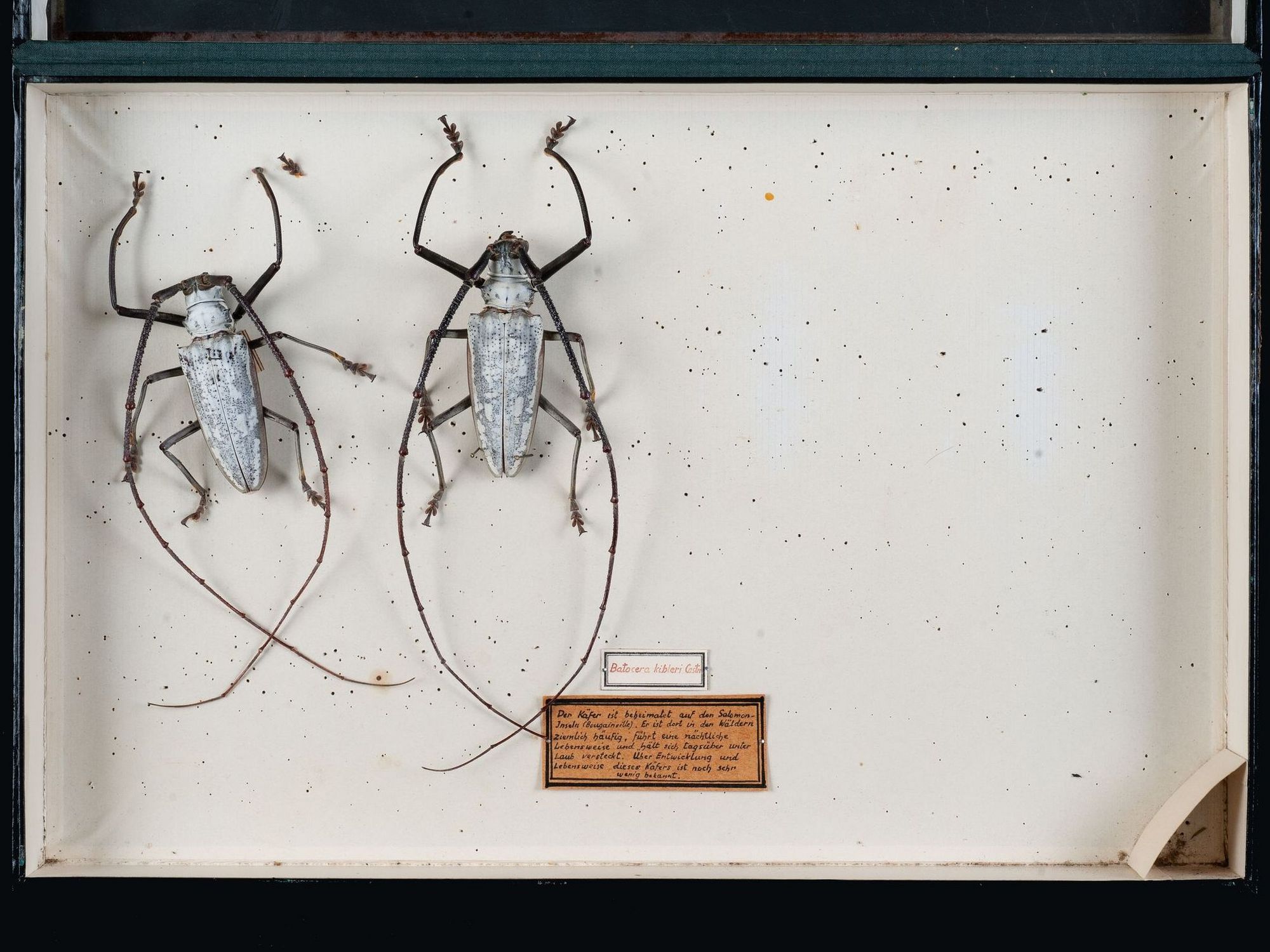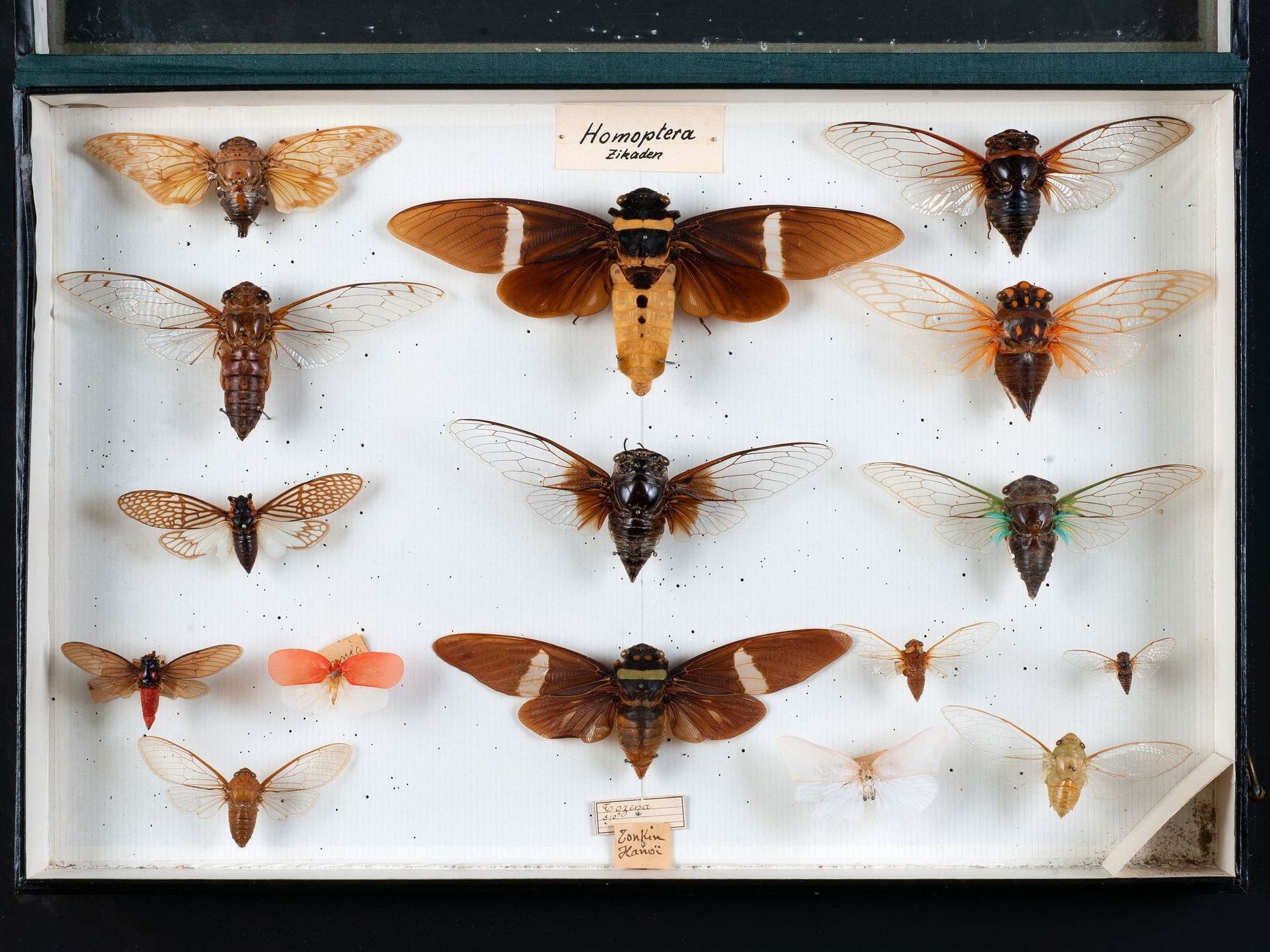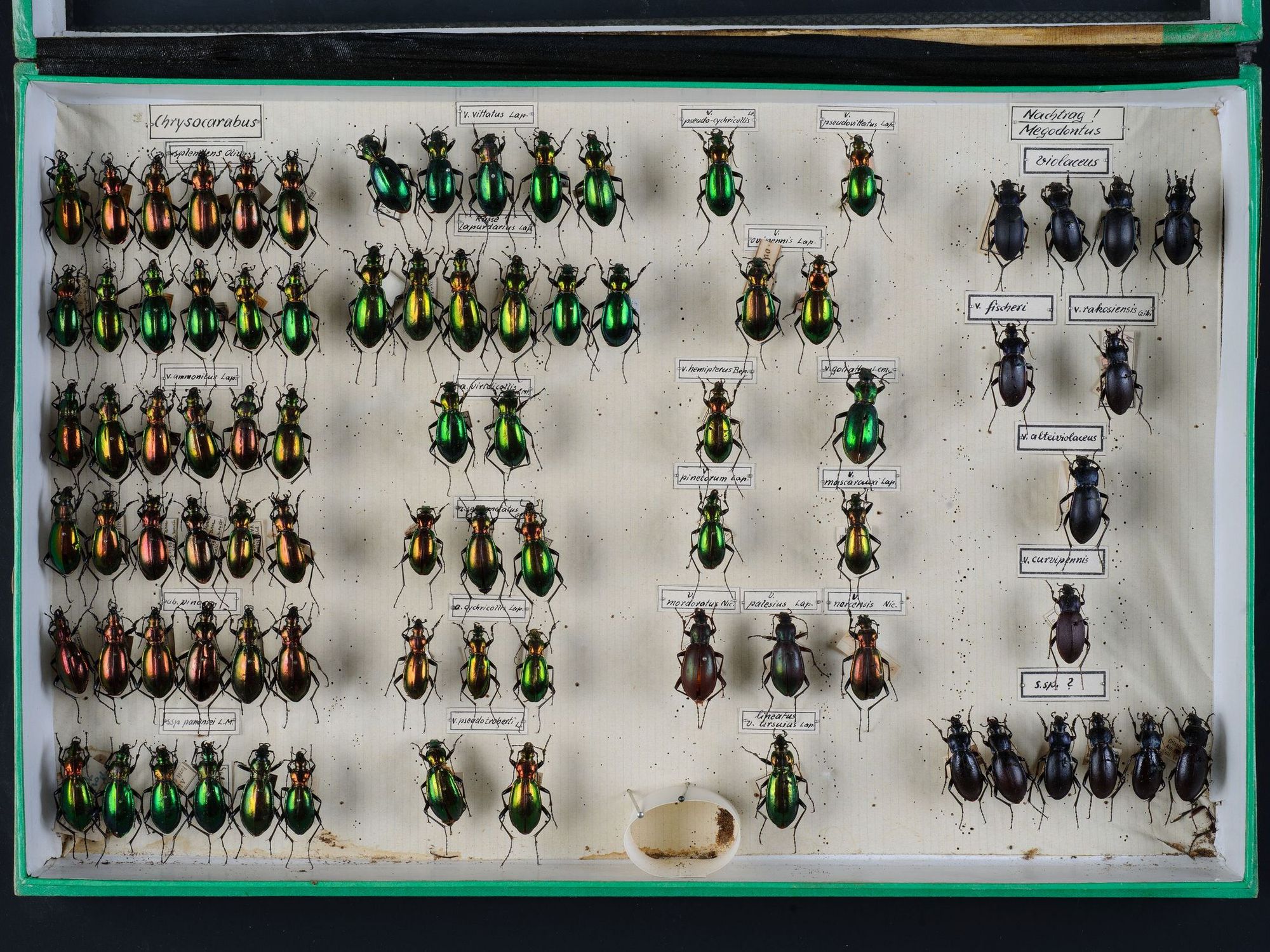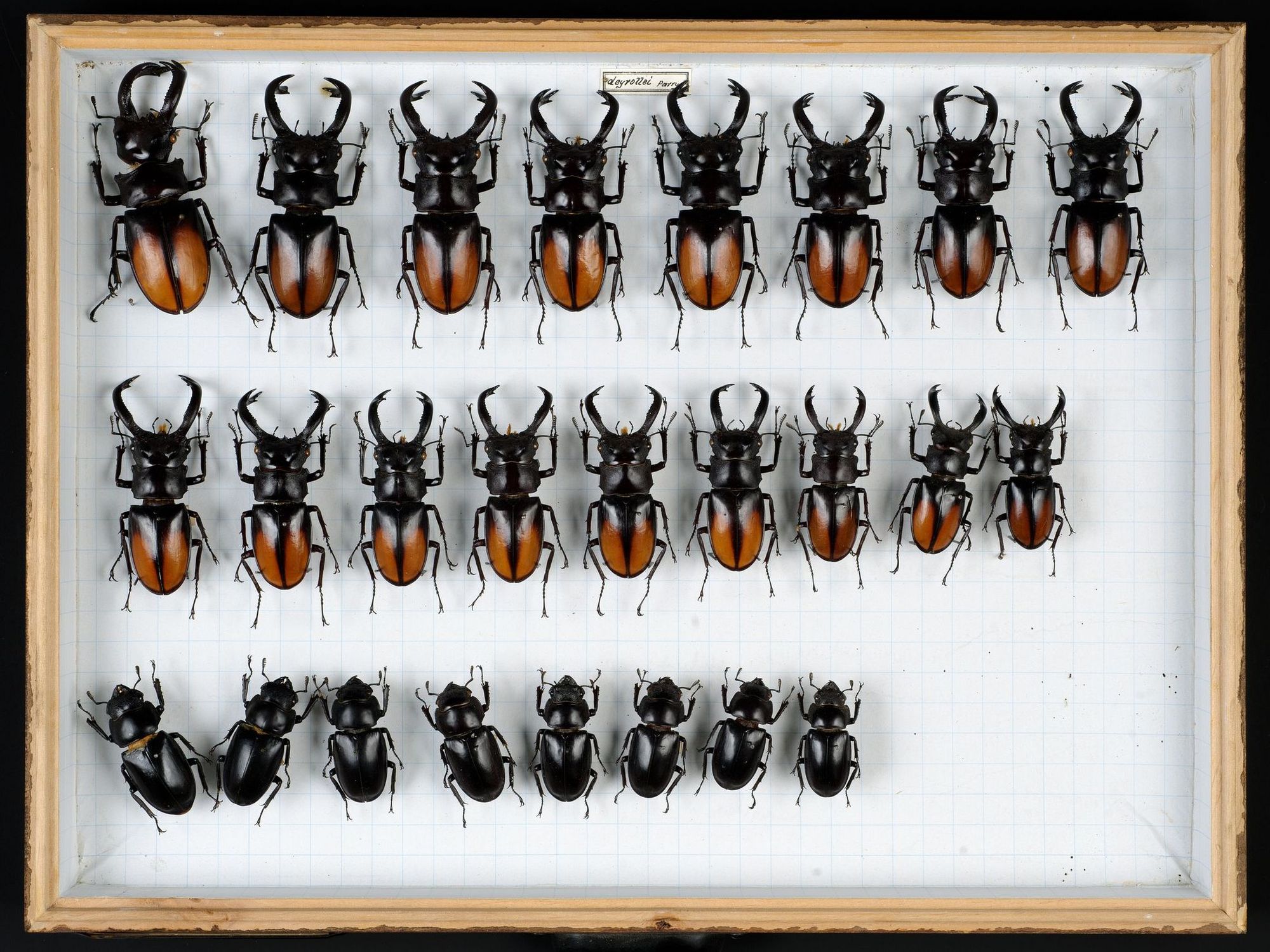What the labels reveal
The hobby researcher soon became even more interested in the small labels attached to the taxidermied animals than in the animals themselves. Deciphering the collectors, locations and owners from the period between 1868 and 1963, she came across historical personalities, places and curious object names such as "Hister hottentota". Her personal interest in the stories grows and prompts her to conduct intensive research. Through her detective work in parallel to the one-and-a-half-year inventory of the collection, she accumulates more and more anecdotes about what the labels reveal. Wiebke Mohr realises that the students helping her with the task are no longer familiar with events and names from the period. She decides to put the stories she has researched on paper.
The result is not an encyclopaedia, a travel guide, a textbook or an explanatory book, but a collection of one- to two-page entertaining overviews of a particular place, animal or person of interest.
Adventure travel, myths and legends
There are chapters about Casablanca, about Napoleon's adjudants or about Eugène Le Moult, one of the biggest insect dealers of his time and seller of the collection. He was born in France in 1882 and grew up in the French overseas department of French Guiana on the north-east coast of South America. He built up a business there by catching butterflies in the tropical rainforests and selling them mainly to Europe.
Via Le Moult, the collection came to the Thünen Institute long before it was given this name. In 1944, the French insect dealer sold the collection to Dr Franz Heske. In 1931, the forest scientist founded the Institute of Foreign and Colonial Forestry in Tharandt, Saxony, which became the Federal Research Centre in 1950 and today's Thünen Institute of Wood Research in 2008. In 1940, the institute was relocated to Reinbek in southern Schleswig-Holstein in Reinbek Castle. The collection found its first home there, which is why a picture of Reinbek Castle adorns the cover of Wiebke Moor's book.
Heske, who also taught zoology at the University of Hamburg in addition to his role as head of the institute, acquired the collection at the time as specimens and study material for insects relevant to forestry science. According to today's value, he paid Le Moult around eight million euros for it when he bought it in 1944. The value of the collection is demonstrated by the fact that many of the insects in it were described scientifically for the first time. The display cases open a window into the diversity of species and the world of that time - for naturalists but also for those interested in history, such as Wiebke Mohr. Prof Dr Andreas Krause, Director of the Thünen Institute of Wood Research, is delighted that the "Thünen Collection" is being researched further and that Wiebke Mohr is sharing stories with readers that are too exciting not to tell.
Anyone who would like to find out more about the stories can order the book now and join Wiebke Mohr on an imaginary journey around the world.
Literature reference: Mohr, Wiebke (2024): Der Schatz - Auf Insektenart im Zick-Zack-Flug durch Zeit und Raum. 14.04.2024, Tredition, softcover, 164 p., in German, ISBN 9783384173546
Link to the book:shop.tredition.com/booktitle/Der_Schatz/W-386-601-419

